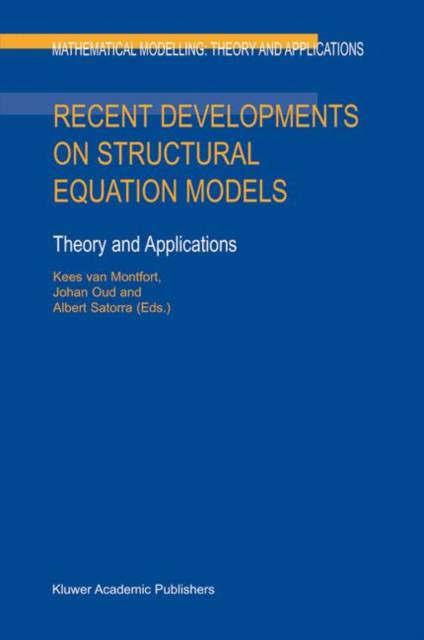
- Afhalen na 1 uur in een winkel met voorraad
- Gratis thuislevering in België vanaf € 30
- Ruim aanbod met 7 miljoen producten
- Afhalen na 1 uur in een winkel met voorraad
- Gratis thuislevering in België vanaf € 30
- Ruim aanbod met 7 miljoen producten
Zoeken
Recent Developments on Structural Equation Models
Theory and Applications
€ 125,95
+ 251 punten
Omschrijving
After Karl Jöreskog's first presentation in 1970, Structural Equation Modelling or SEM has become a main statistical tool in many fields of science. It is the standard approach of factor analytic and causal modelling in such diverse fields as sociology, education, psychology, economics, management and medical sciences. In addition to an extension of its application area, Structural Equation Modelling also features a continual renewal and extension of its theoretical background. The sixteen contributions to this book, written by experts from many countries, present important new developments and interesting applications in Structural Equation Modelling. The book addresses methodologists and statisticians professionally dealing with Structural Equation Modelling to enhance their knowledge of the type of models covered and the technical problems involved in their formulation. In addition, the book offers applied researchers new ideas about the use of Structural Equation Modeling in solving their problems. Finally, methodologists, mathematicians and applied researchers alike are addressed, who simply want to update their knowledge of recent approaches in data analysis and mathematical modelling.
Specificaties
Betrokkenen
- Uitgeverij:
Inhoud
- Aantal bladzijden:
- 358
- Taal:
- Engels
- Reeks:
- Reeksnummer:
- nr. 19
Eigenschappen
- Productcode (EAN):
- 9781402019579
- Verschijningsdatum:
- 30/04/2004
- Uitvoering:
- Hardcover
- Formaat:
- Genaaid
- Afmetingen:
- 165 mm x 245 mm
- Gewicht:
- 716 g

Alleen bij Standaard Boekhandel
+ 251 punten op je klantenkaart van Standaard Boekhandel
Beoordelingen
We publiceren alleen reviews die voldoen aan de voorwaarden voor reviews. Bekijk onze voorwaarden voor reviews.







